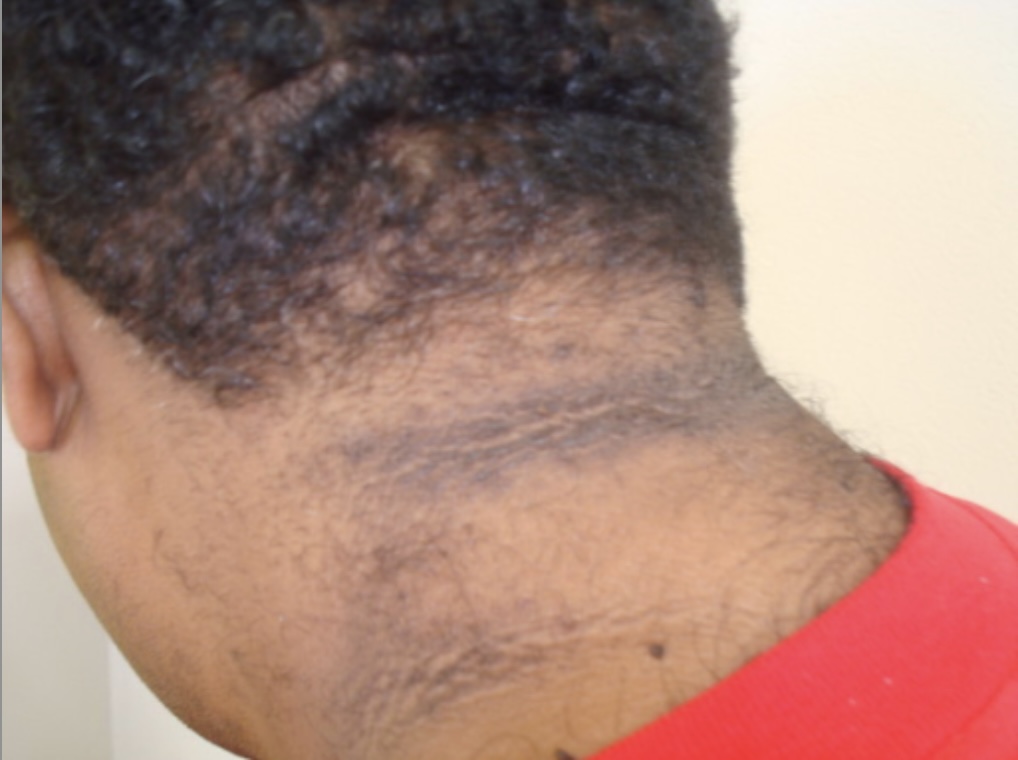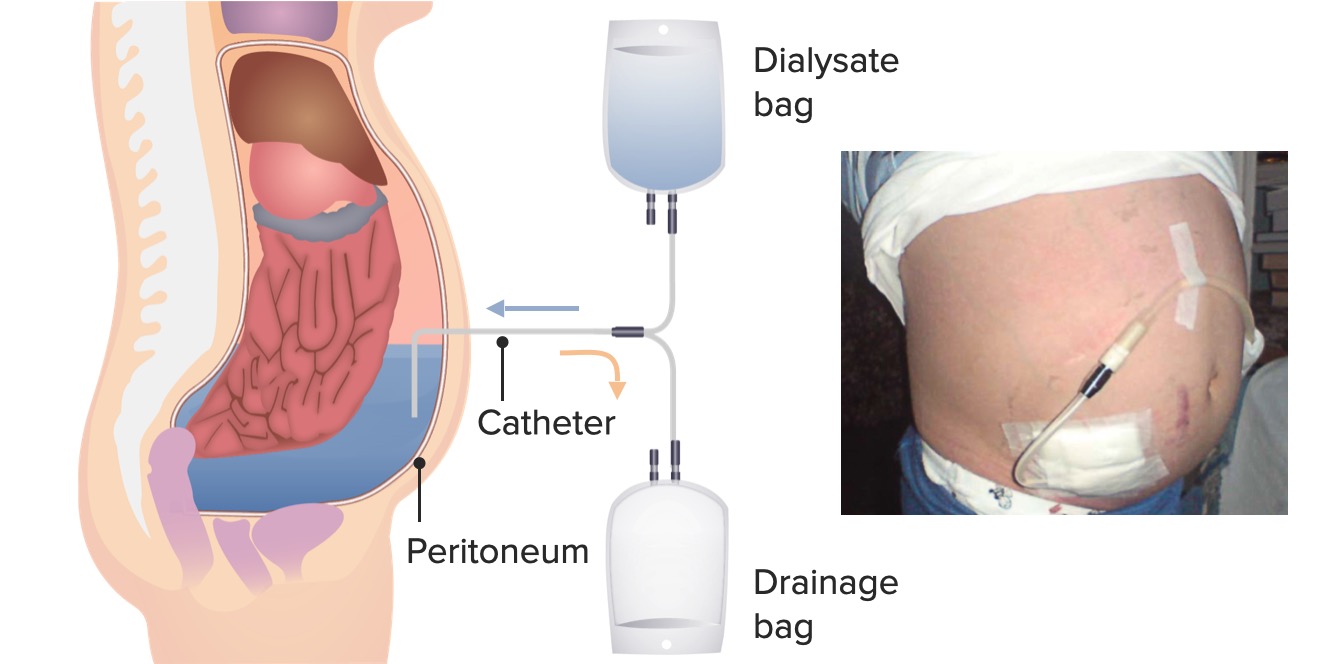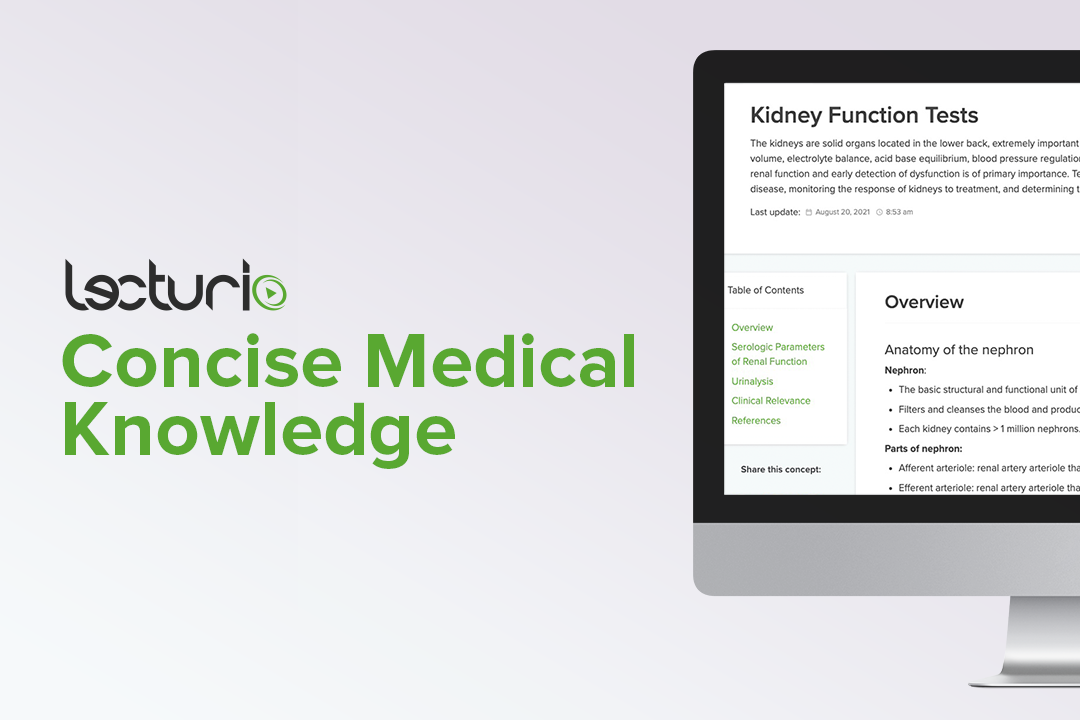Playlist
Show Playlist
Hide Playlist
Diabetic Glomerulopathy esp. Kimmelstiel-Wilson Disease
-
Slides MembranoproliferativeGlomerulonephritis RenalPathology.pdf
-
Reference List Pathology.pdf
-
Download Lecture Overview
00:00 We'll take a look at now systemic disease with nephrotic syndrome, this is diabetic glomerulopathy. 00:06 First, we'll take a look at nodular glomerulosclerosis. 00:10 Some of the damages you find with diabetic glomerulopathy is the fact that you will then have these depositions in the mesangium. 00:18 That is not the first change but it is the change that's important for you to know on light microscopy. 00:24 Unless, of course, you prefer to Kimmelstiel-Wilson disease or nodules. 00:29 The glomerulopathy occurs in both Type 1 or Type 2 but occurs more so often in Type 1 than in Type 2. 00:37 More common cause of chronic renal failure in the US as a whole when you are going to diabetic nephropathy, it is the most common cause of renal failure, isn't it? Now, obviously, in terms of which one going faster, well, perhaps, well, it depends Type 1, then maybe because of fluctuation in insulin level and non-compliance and so on and so forth, so a number of factors here. 00:58 Nodular glomerulosclerosis, well, what might then happen? That then represents poor glycemic control hence the severe diabetic damage - hypertension, diabetic retinopathy and correlating with co-existing glomerulopathy - now, a couple of things that are important here. 01:16 If you've heard of metabolic syndrome X which is hyper, hyper, hyper - hypertension, hyperglycemia, hyperlipidemia - two of the three are here. 01:26 Hypertension, hyperglycemia; poor glycemic control. Hypertension. 01:32 If you have diabetic nephropathy, wow, what other organ are you seriously worried about right now? Retinal detachment? Blindness forever - diabetic retinopathy and usually correlates with the coexisting glomerulopathies maybe membranous is taking place as well. 01:53 Nonenzymatic glycosylation is the pathogenesis. 01:59 What does that mean? A glucose is doing what? A glucose is binding to protein nonenzymatically causing damage up and down the body with diabetes mellitus as we shall see in endocrinology. 02:14 I think it could be diabetic retinopathy, it could be diabetic neuropathy, it could diabetic cardiomyopathy, it could be diabetic nephropathy, it could diabetic microangiopathy - all of these, nonenzymatic glycosylation. 02:26 Attaches to protein without an enzyme, it increases vessel tubular cell permeability to protein so may result more or so like how? Nephrotic or nephritic? Good, nephrotic. 02:39 Now, important here, non-enzymatic glycosylation, NEG, of the afferent and efferent arterioles. 02:49 Picture this, here's my glomerulus, and the afferent, here's my efferent. 02:55 I will have hyaline arteriolosclerosis. 03:01 Please highlight in your head forever more - hyaline arteriolosclerosis, afferent efferent or arterioles they're undergoing narrowing. 03:13 Important, interesting. Why? Pathologically we know this is true. 03:18 Involves efferent arteriole before the afferent, wow. Why is that important? Good, you should be thinking, which one of the first dipstick may detect your patient having diabetic nephropathy? We talked about this in urinalysis, give me one of the first dipsticks that you'd be using in the urine to then suspect diabetic nephropathy? Microalbuminuria, okay. 03:46 As soon as you find microalbuminuria, what are you going to give to protect that kidney? ACE inhibitor. What does an ACE inhibitor do? Removes effective angiotensin 2 on whom? Good, efferent arteriole. Why is it important, are you seeing this? Take a look at that last statement -- efferent arteriole undergo sclerosis. What's it gonna do? Spank, spank, spank, spank, spank the glomerulus, isn't it? It's on point you're going to cause damage so why not relieve some of that pressure by giving ACE inhibitor? Understand that please. Clinically huge ramifications. 04:32 Osmotic damage to glomerular capillary endothelial cell. What does that mean? The two major pathogeneses, the first one we talked about - nonenzymatic glycozilation. 04:44 The osmotic damage, well, the best one to give you as far as the pathogenesis would be, well, sure, diabetic retinopathy is an issue. 04:53 The retina is not the same thing as your lens, isn't it? Right? Here is my lens and so then my lens was white, it looked white like the water fall. 05:07 Have you ever seen these pretty water falls? That would be Niagara, Brazil, Angel Falls, whatever. But have you ever seen a waterfall? How does it look like on the outside? Looks white. What is that in Greek? Cataract, right? So, cataract means waterfall, a beautiful name for two reasons. 05:25 Number one, the lens which normally should be clear or clear-ish now looks white, a cataract, and number two, that glucose, read the statement here, instead of going through a glycolytic pathway, ends up going through aldose reductase pathway and you end up creating sorbitol. How many times have you seen a back of a sugar packet or artificial sweeter? And it says sorbitol, you might wanna think twice because in diabetes, there might actually be accumulation of sorbitol. Maybe here in the lens - uh-oh. 06:00 Here comes my water fall, osmosis of fluid into the lens causing what? Cataract so two major pathogenesis here - number one, nonenzymatic glycosylation, the other big one here is through your aldose reductase pathway forming the all toxic in abundance sorbitol. 06:21 Osmotically active, what does it do? It increases osmotic pressure, here comes my water into as I'm giving you as an example, the lens resulting in cataracts. Hyperfiltration damage to the mesangium is important, there's selective hyaline arteriolosclerosis of the efferent arteriole that we talked about, listen to that statement that's important, the efferent arteriole undergo sclerosis. 06:47 What then happens to the glomerulus? I can be any more dramatic, I just said spank, spank, spank, spank, spank. 06:54 So now, there's hyperfiltration. 06:56 There's hyperfiltration. Imagine, how long does it take for you to go into diabetic nephropathy? Decades. So my goodness, at some point. The glumerulus can't take it anymore. 07:08 There's increase GFR which damages the mesangium, are you putting all this together with kidney damage but obviously with diabetes mellitus it's a systemic issue from head to toe. 07:18 What else might you find? All I'm doing here is giving you one particular issue within the kidney such as Kimmelstiel Wilson disease but along with this you know that there's other issues probably already taking place in your patient. 07:32 Diabetic microangiopathy, what does this mean? Increase deposition of your, well, non-enzymetic glycosylation of type 4 collagen and you might have glomerular basement membrane, tubular and basement membrane, and mesangium all being involved at the same time causing all kinds of issues. 07:50 Nonspecific immunofluorescence, that's where your labs is concerned. 07:59 Electro microscopy shows fusion of podocytes, really, it seems it could be a nephrotic type of issue but what are you really paying attention to? It's the light microscopy, huh? Microscopic findings - afferent, efferent walking up arteriosclerosis - hyaline, hyaline, hyaline, hyaline, versus hyperplastic. 08:18 Hyperplastic, won't be see here at all. It's the hyaline arteriosclerosis. 08:24 Hyperplastic you would be seeing with malignant hypertension. 08:28 Malignant hypertension not here. 08:30 When the afferent arteriole becomes hyalinized, now you have GFR decreased, the afferent but that takes on a little bit later. Usually it's efferent first. 08:39 The nodular masses develop in the mesangial matrix what kind of mass? Talk about the Kimmelstiel Wilson nodule and due to type IV collagen nonenzymatic glycosylations involved and it traps the proteins and that may be in the mesangium, glomerular basement membrane or even in the tubules. 08:56 There is something called a multi-type of issues there. 09:00 Let's continue. Laboratory findings. 09:04 Microalbuminuria, what does that mean to you? First sign of diabetic glomerulopathy usually begins ten years of poor glycemic control, ten years is how much it's taken and this is usually due to, well, lack of proper nutrition or not paying enough attention to your nutrition. 09:23 The microalbuminuria dipstick detects albumin levels at quite low. You have to. It has to. 09:28 Other renal disease, seriously, with diabetes mellitus, renal papillary necrosis, acute and chronic pyelonephritis; what does that mean? That's a lot of glucose in your urine over a long period of time. So, what does that mean? "Wow, patient, your urine is mighty tasty." What's going on? There's a lot of glucose in that urine. It is sweet urine. Who is it feeding? The E. coli? So, you got bacteria, not good. So, you might then have - here it comes - here comes the E. coli coming up through the urethra. 10:02 It comes up further it may then go into the kidney. 10:05 What is that called when it entered the kidney? A deep portion. It might result in renal papillary necrosis, acute and chronic pyelonephritis. 10:14 Oh, lot of problems, and that renal papillary necrosis? Well, some of this might end up in the remember that junction, the pelvico-ureteric junction, may result in obstruction type of issue. 10:25 Good stuff, but if your pathophysiology was weaker then you might have - well, I'm thinking at this point you're developing a nice little story here in which you're seeing all the complications,
About the Lecture
The lecture Diabetic Glomerulopathy esp. Kimmelstiel-Wilson Disease by Carlo Raj, MD is from the course Glomerulonephritis.
Included Quiz Questions
Which of the following statements about the pathogenesis of diabetic glomerulosclerosis is INCORRECT?
- Osmotic damage to the glomerular capillary endothelial cells is due to glucose entering the cells.
- Nonenzymatic glycosylation of GBM leads to increased permeability to proteins.
- No answers are incorrect.
- All answers are incorrect.
- The nonenzymatic glycosylation of arterioles leads to hyalinization.
What is responsible for the hyperfiltration that occurs in early diabetic glomerulosclerosis?
- Hyaline arteriolosclerosis affects the efferent arteriole before the afferent arteriole.
- Osmotic damage increases permeability-increasing filtration fraction.
- Damage to the visceral epithelial cell podocytes due to chronic pyelonephritis.
- Increased deposition of type IV collagen leads to decreased filtration fraction.
- Damage to the mesangium leads to loss of structural support for the glomerulus.
What are Kimmelsteil Wilson nodules primarily composed of?
- Type IV collagen with trapped proteins
- Parietal epithelial cells
- Weakened visceral epithelial cell processes
- Damaged mesangial cells
- Immune complex deposits
Which of the following statements about the epidemiology of diabetic glomerulosclerosis is INCORRECT?
- It occurs more frequently in patients with type II diabetes.
- It occurs in approximately 35-45% of patients with type I diabetes.
- It is often associated with other renal diseases such as renal papillary necrosis.
- It is the most common cause of chronic renal failure in the US.
What is the event that eventually leads to a decrease in GFR that occurs in late diabetic glomerulosclerosis?
- Hyalinization of the afferent arteriole
- Damage to the mesangial matrix
- Osmotic damage to the tubular epithelial cells
- Fusion of podocytes
- Renal papillary necrosis
Which of the following risk factors are associated with nodular glomerulosclerosis?
- Diabetic retinopathy
- Hypotension
- Low correlation with coexisting glomerulopathy
- Hypoglycemia
- Hypokalemia
What is responsible for osmotic damage to glomerular capillary endothelial cells in diabetic glomerulosclerosis?
- Glucose conversion by aldose reductase into sorbitol
- Selective hyaline arteriosclerosis of the efferent arterioles
- Increased deposition of type IV collagen
- Damage to the capillary endothelial cells due to pyelonephritis
- Nonenzymatic glycosylation of the GBM
Which of the following statements about diabetic glomerulopathy is CORRECT?
- Hyaline arteriosclerosis of the afferent and efferent arterioles is associated with diabetic glomerulopathy.
- Decreased type IV collagen synthesis is associated with diabetic glomerulopathy.
- When the afferent and efferent arterioles become hyalinized, GFR increases.
- Electron microscopy findings are normal in diabetic glomerulopathy.
- When the afferent and efferent arterioles become hyalinized, GFR remains normal.
Which of the following laboratory findings is characteristic of diabetic glomerulopathy?
- Microalbuminuria
- WBC casts
- Fatty casts
- Granular casts
- RBC casts
Customer reviews
5,0 of 5 stars
| 5 Stars |
|
1 |
| 4 Stars |
|
0 |
| 3 Stars |
|
0 |
| 2 Stars |
|
0 |
| 1 Star |
|
0 |
Congratulations! Complete review !!! Excelent, high level questions. Best review I have seen about the topic!







